GENERAL GARDENING
10 Rare and Unusual Houseplants to Grow
 Are you looking to step up your indoor gardening game and go beyond the lovely – but commonplace – pothos and spider plants?
Are you looking to step up your indoor gardening game and go beyond the lovely – but commonplace – pothos and spider plants?
For a truly extraordinary plant array, check out these beautiful and unusual cultivars that emphasize strange shapes, bold colors, and inspiring blooms.
For plant collectors that seem to have everything, these oddballs would also make the perfect gift.
1. Pitcher Plant (Nepenthes × ventrata)
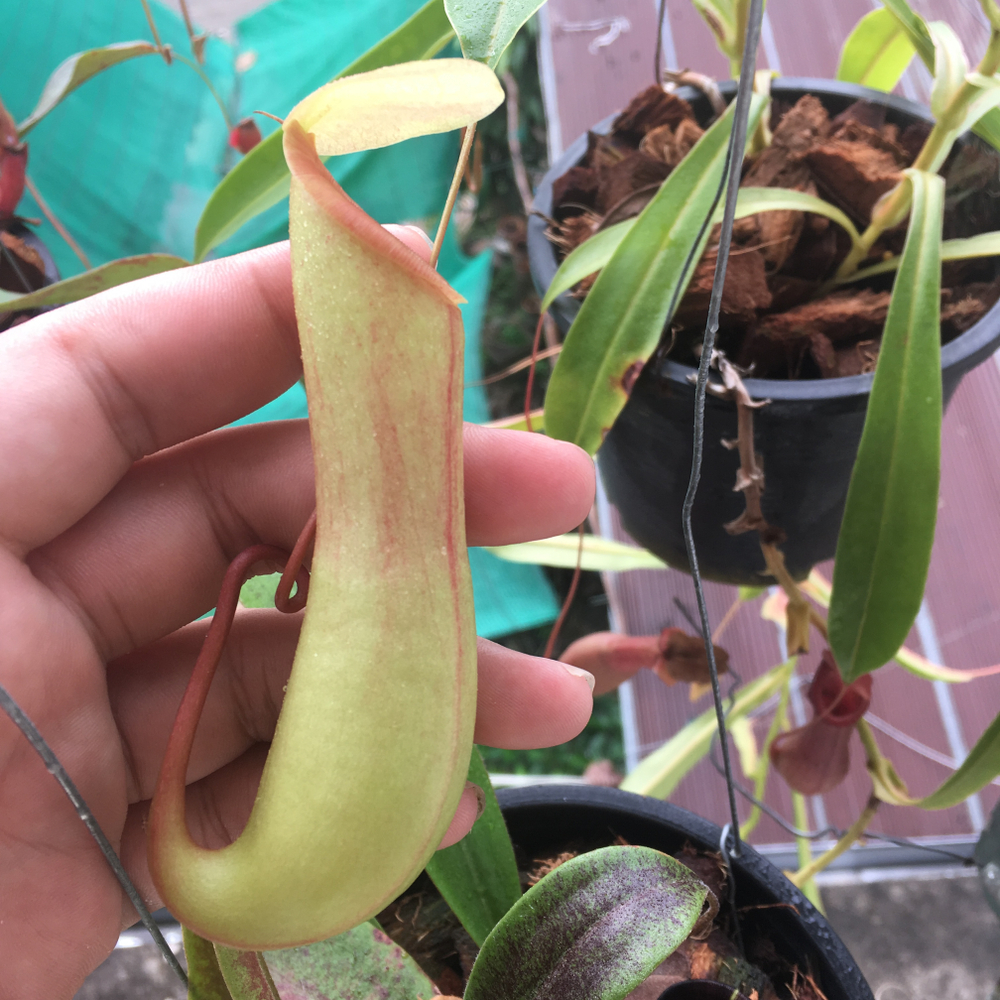
A carnivorous plant native to the Philippines, pitcher plant consumes flying and crawling insects with its oblong pitfall traps that dangle from tendrils attached to its simple green leaves. Pitcher plant attracts creepy crawlies through nectar secreted on the underside of the trap’s lid.
Insects slip into the pitcher and drown in the liquid contained within. Eventually bugs are digested by enzymes, which supply valuable nutrients to the plant.
Providing plenty of sunlight, warmth, and humidity will keep pitcher plant quite happy. Because pitcher plant is adapted to catch its own nutrients, use a light soil consisting of half sphagnum moss and half perlite. Keep the soil consistently moist.
During summer or when kept outdoors, pitcher plant has no problem feeding itself.
When kept indoors over winter, feed it each month with live crickets, dried blood worms, or fish food flakes until springtime.
2. Goldfish Plant (Columnea gloriosa)
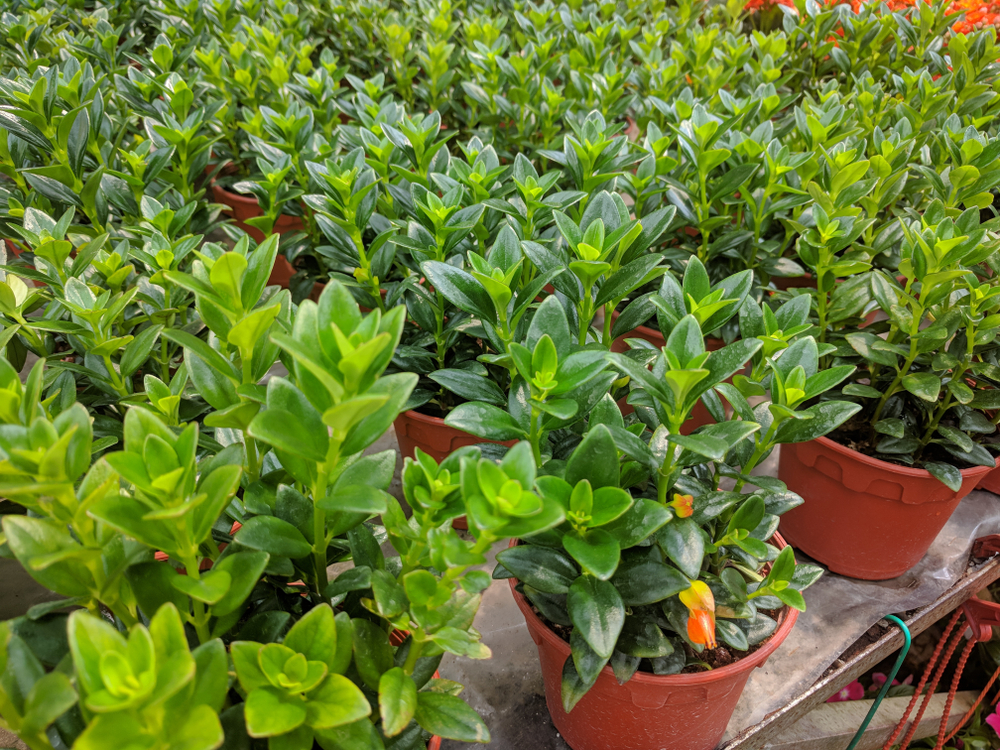
With trailing, glossy, deep green vines amid a plethora of orange blooms that resemble little goldfish, this unique cultivar will produce these flowers year-round when given the right conditions.
As a native to South and Central America, goldfish plant loves bright, indirect light and lots of humidity.
Since they are epiphytes, goldfish plants grow best in coarse and airy soil, such as coarse sphagnum moss. Keep it well watered in summer but allow the soil to get slightly dry between waterings over winter to encourage profuse blooming.
3. Lavender Scallops (Kalanchoe fedtschenkoi compacta)

Also known as Bryophyllum fedteschenkoi, lavender scallops is a rare beauty with upright, fleshy, cream and green leaves that have a scalloped edge that turns pinkish red under bright light.
Since it is a succulent hailing from Madagascar, lavender scallops absolutely thrive in ample amounts of sunlight and little water.
Even black thumbs should find this plant very easy to care for!
4. Desert Rose (Adenium obesum)

An evergreen succulent shrub from Africa, desert rose is a looker indeed.
With a swollen trunk, woody branches, leathery green leaves, and tubular flowers that range in color from red to pink, desert rose can be pruned, bonsai style, into a miniature tree or allowed to grow au natural to a height of up nearly 10 feet tall. Despite its complex appearance, desert rose is really easy to care for. It needs very little water to thrive since it hails from semi-arid climates.
It does require plenty of sun and warmth though, and will drop its leaves if temperatures dip below 50°F.
Potted up indoors near a south facing window should certainly keep desert rose blooming and happy.
5. Madagascar Palm (Pachypodium lamerei)
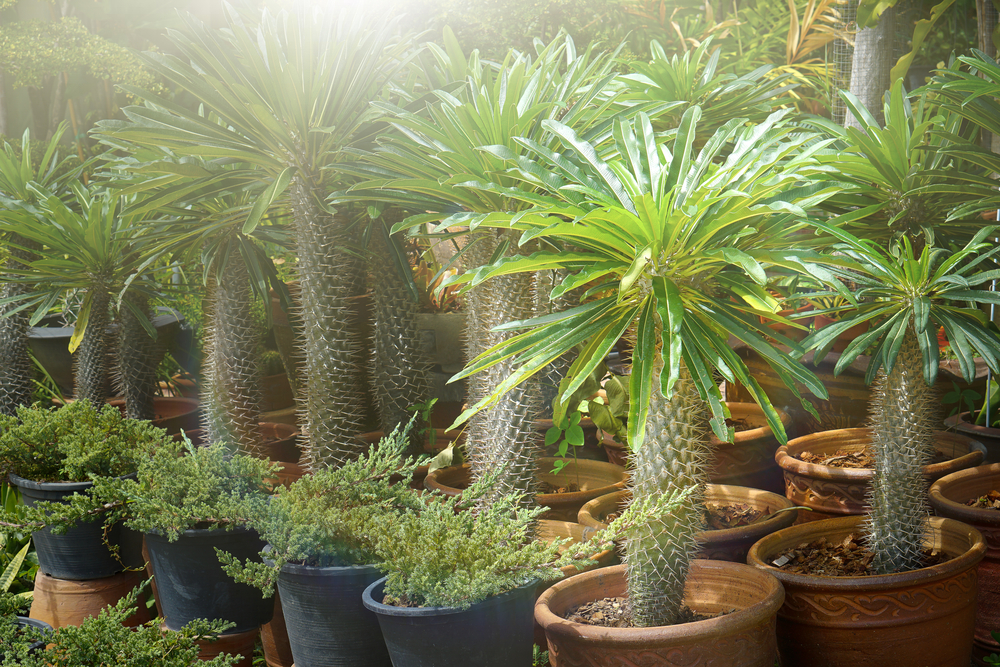
Although it looks like a cross between a palm tree and a cactus, Madagascar palm is actually a succulent from the dogbane family.
Madagascar palm – with is silvery, prickly trunk and a crown clustered with green leaves – can grow 20 feet tall in the wild but can be dwarfed to a size of less than 6 feet when potted indoors.
It’s a slow grower too, so you will have many years watching it mature.
Place Madagascar palm in a sunny location and water sparingly, just as you would other succulents. Use a good draining soil, such as cactus soil, and fertilize with a low-nitrogen formula every 5 weeks in spring and summer.
6. Echinopsis (Echinopsis calochlora)
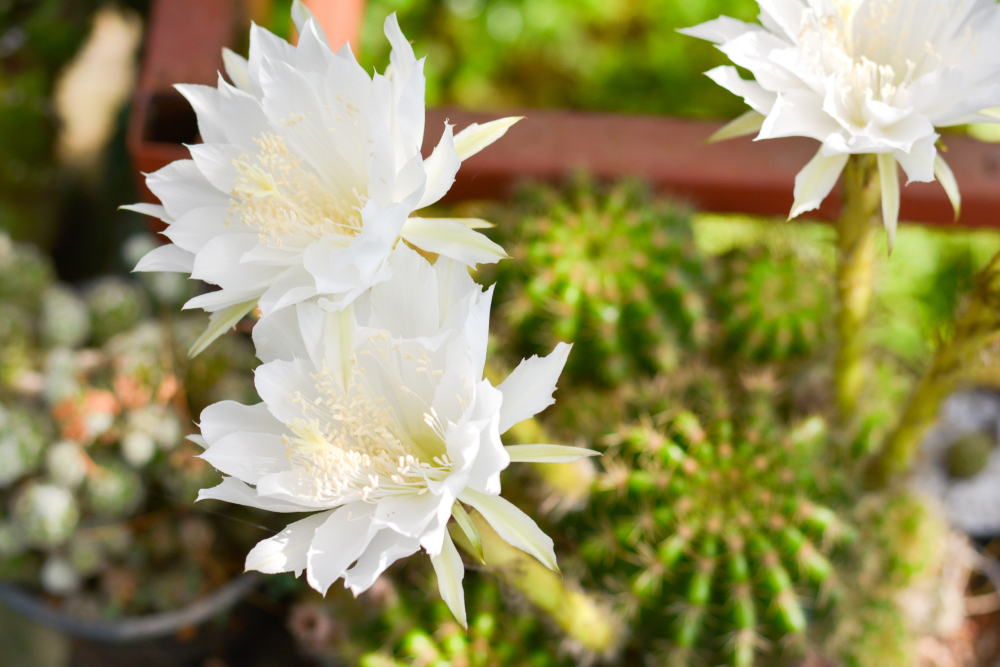
For a cactus proper, echinopsis certainly deviates from the typical cactus forms.
While it starts off as a small sea urchin like mound, about 4 inches in diameter with numerous thorny ribs, it blooms with huge 6 inch white flowers only at night.
Found growing along rocky soils in South America, echinopsis needs a light loamy soil topped with pebbles or crushed seashells.
Like other cacti, give this one lots of sunlight and little water, especially in the winter months.
Echinopsis is easily propagated as well – simple repot the little pups that appear at the base of the plant.
7. Purple Shamrock (Oxalis triangularis)
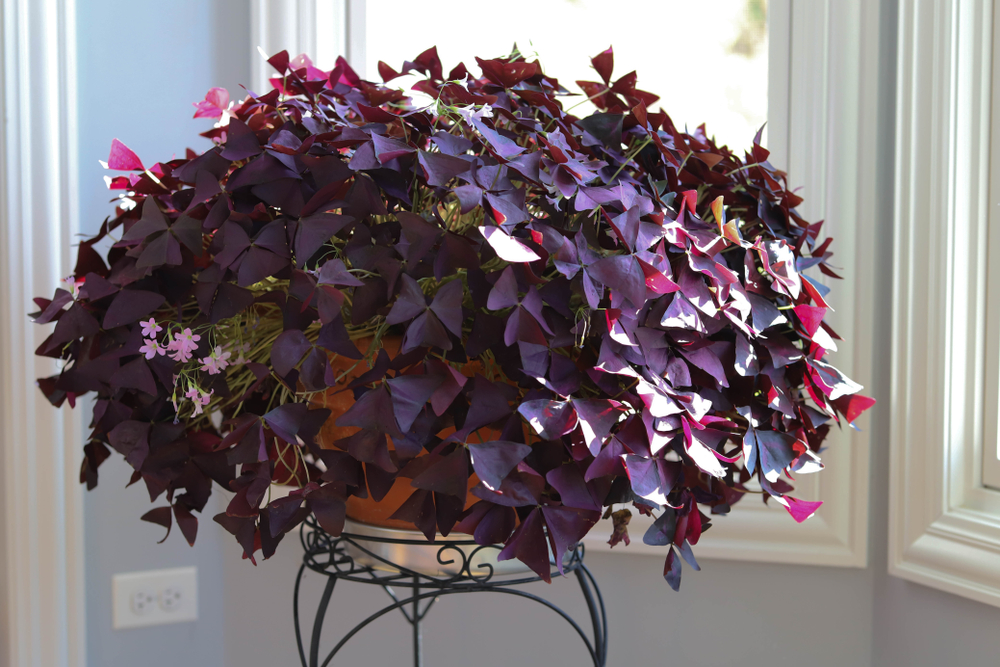
For a burst of color year round, purple shamrock bears stunning reverse triangular leaflets in sets of three that range from deep purple to magenta.
The stems emerge from underground tubers that look a little like pine cones.
Purple shamrock is not a true shamrock, but is part of the wood sorrel family. Each day, it will move and turn towards the light in the morning and afternoon, then close up its leaves at nightfall.
Although purple shamrock is a fairly easy going plant, it prefers bright, mostly indirect light and a cooler spot within the home. If temperatures are consistently above 80°F, it can become somewhat ragged in appearance.
It’s a fast grower though, so trim back any sad looking foliage and it will bounce back in no time.
8. String of Dolphins (Senecio peregrinus)

Perhaps you’ve heard of string of pearls or beads? From the same plant family comes string of dolphins, a succulent that really does look like dolphins leaping along the trailing stems.
A hybrid derived from crossing string of pearls with candle plant, string of dolphins produces curved leaves that have two small points in the midsection that resemble fins.
Perfect in a hanging basket, give string of dolphins plenty of light and allow the soil to dry out between waterings.
10. Paddle Plant (Kalanchoe thyrsiflora)

A stalkless succulent, paddle plant forms a tight cluster of large fleshy leaves from a central rosette.
Growing to a length of 6 inches, each leaf overlaps slightly with neighboring leaves, like a stack of pancakes, which explains its other common name: flapjacks.
Leaves are grey green in color, but the margins turn a flashy red when exposed to full sun.
Although paddle plant will fully mature after 3 to 4 years and bear fragrant yellow flowers, it dies off after it blooms. Not to worry though, the mother plant will produce plenty of offsets so you can start the process anew.
To keep paddle plant happy, plant in a cactus mix in a spot that receives plenty of sunlight.
10. Black Coral Taro (Colocasia esculenta ‘Black Coral’)
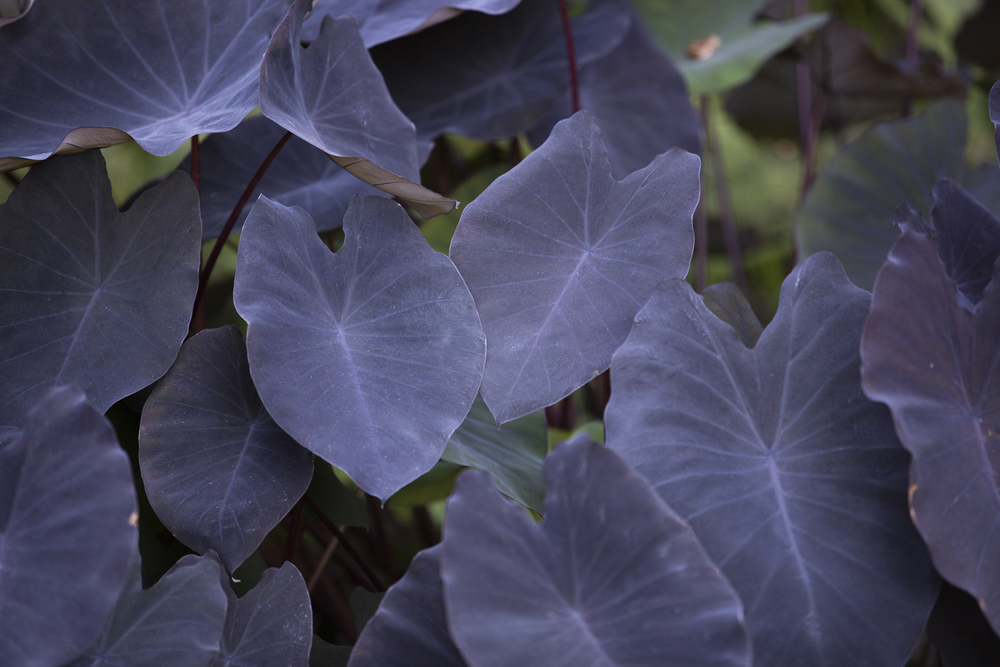
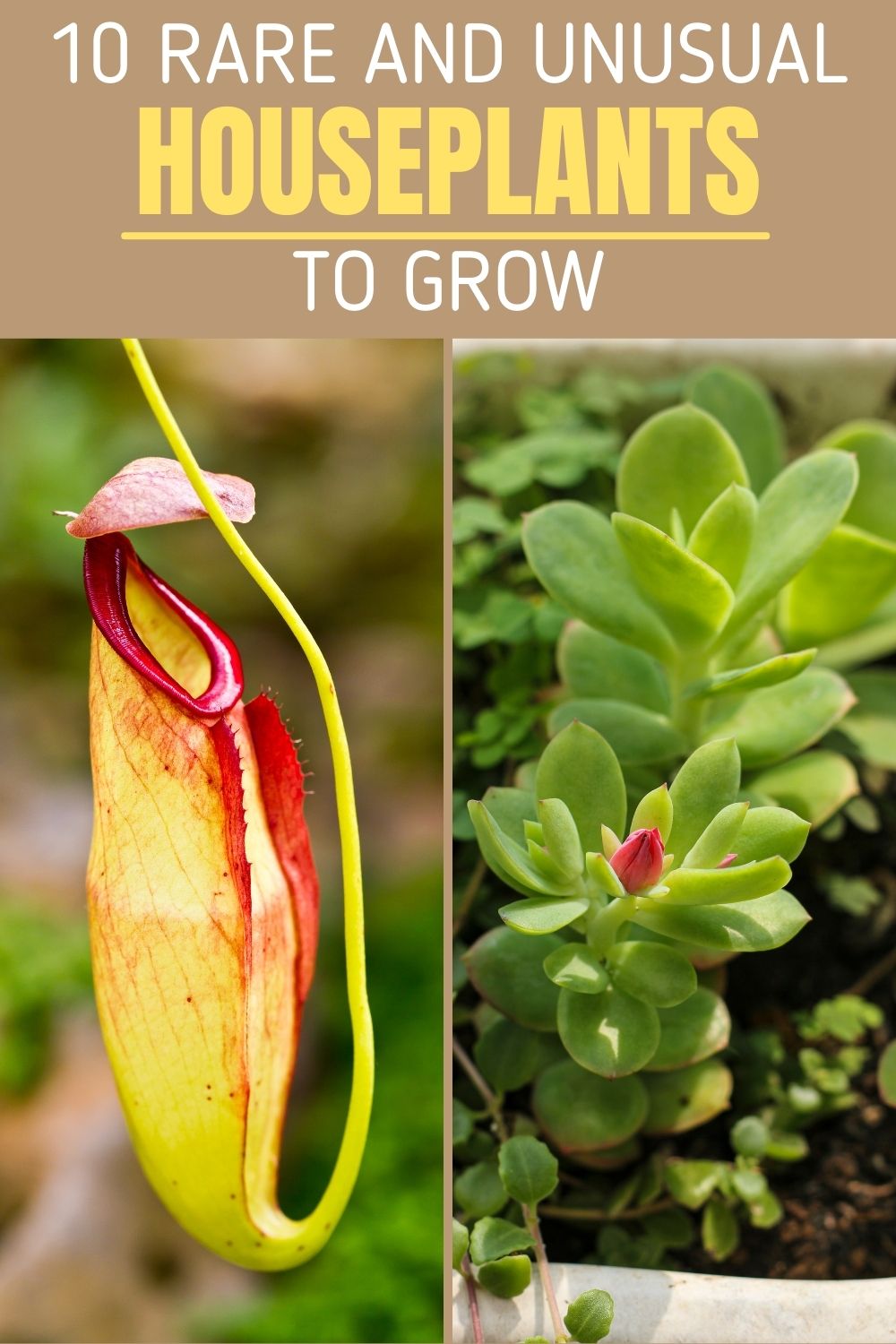
The ornamental plant with edible tubers, black coral taro features enormous 2 foot long heart shaped, jet black leaves.
It can reach a height and spread of up to 6 feet, so plant this one in a large container.
Caring for this elephant eared plant isn’t too difficult, provided you give it filtered sunlight or part shade and soil enriched with compost.
Because it is native to tropical areas of East Asia, it loves the water and can handle wet feet.
If you want to find more natural remedies, take look at the Everyday Root Book!
With 350+ pages, you will be able to replace all of the toxic products and medications in your home with healthier, all-natural alternatives.
You will be confident in knowing exactly what is in the products your family uses and happy with the money you will save every month.
In addition, they offer you three more bonuses + 75% discount only this month!
GET THE EVERYDAY ROOTS BOOK NOW!
Included in this life changing book are:
- 105+ NATURAL HOME REMEDIES – Treat almost any illness with natural ingredients you probably already have in your kitchen.
- 75+ NATURAL BEAUTY RECIPES -Get the best hair and skin you’ve ever had and look younger with these insanely clever natural beauty recipes.
- 35+ DYI HOUSEHOLD PRODUCTS & CLEANERS – Never Buy Toxic Cleaning products again! Save a fortune and your families health with these super simple homemade cleaning products that work better than the chemical ones.
Official Website: EVERYDAYROOTSBOOK.COM


